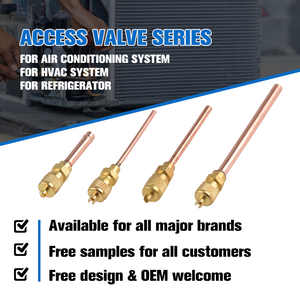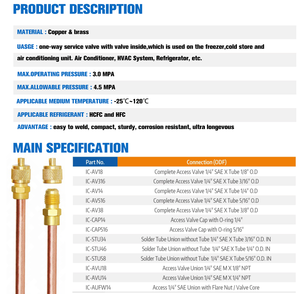
All categories
Featured selections
Trade Assurance
Buyer Central
Help Center
Get the app
Become a supplier

(2032 products available)

















































An AC position control system regulates the angular (or rotational) position of an object. These systems change alternating current (AC) signals to direct a specific AC signal output that depends on the input condition. The system does this through components like sensors, controllers, and actuators. An AC position control system finds application in industrial machines, robotics, aerospace, etc.
The type of control system depends on the type of controller used. Here are the different types of position control systems:
Proportional control position control system
In this type of position control system, the control action is directly proportional to the position error. The position error is the difference between the desired value and the actual value. For example, if the error is large, the control action will also be large. If the error is small, the control action will be small. The main benefit of proportional control is the reduction of steady-state error. However, it struggles to move and fast and can cause system oscillation.
Integral control position control system
This type of position control system uses an integrator to eliminate steady-state errors that occur in AC systems with a proportional control loop. The integrator sums up the size and duration of the error. The controller output will increase until the steady-state error drops to zero. An integral controller provides better steady-state accuracy. However, it may lead to the system being too responsive or sensitive, resulting in system oscillation or instability.
Derivative control position control system
This control system predicts the future error based on its current rate of change. It uses a derivative controller, which works to decrease the rate of error change, thereby improving the system's stability and responsiveness. Derivative control minimizes the effect of sudden disturbances on system output. However, it requires accurate measurement of the system's output.
>PID position control system
PID means Proportional, Integration, and Differentiation. This control system combines the three types of control systems. It regulates the concentrated position of an object with respect to time. A PID system has three parameters — PID parameters. These parameters need tuning to achieve the desired level of responsiveness and stability. With proper tuning, a PID position control system provides a stable system response.
The features of the position control system for AC motors will greatly depend on the specific application requirements. A few standard features include;
The features will also depend on the specific applications. This includes; closed loop position control using feedback sensors, multiple control modes, PID controllers, position setpoint programming, variable frequency drive (VFD) integration, graphical user interfaces (GUI), position-tracking control, and safety features. The functions will depend on the specific applications of the AC position control system. This includes;
The AC position control system has a closed-loop control system that improves precision. It controls the exact position of the motor rotor. This system aims to use feedback to adjust the control according to the desired output. Here, the sensor continuously monitors the rotor position. The controller compares it to the desired set point and makes corrections.
This system enhances the accuracy of the actuator by using sensors such as encoders or resolvers. It also makes use of position transducers to detect changes. Based on the measurements from the feedback sensor, the controller adjusts the input to the power amplifier stage. This results in an adjustment of the actuator to move it to the desired position. Furthermore, the position control loop will compensate for any disturbances.
Moreover, in synchronous AC systems, the position control system is closed by maintaining the rotor position. This is in sync with the rotating magnetic field of the stator. In asynchronous systems, it is achieved by monitoring the rotor position and adjusting it to the desired value. Thus, with proper control law, using proportional-integral-derivative (PID) controllers, complex algorithms, or direct torque control, an efficient position control system can be realized.
Torque control is converted to position control by monitoring the position or velocity of the actuator. This is then used to adjust the output torque of the motor. These measures will help in the smooth movement of the actuator to the desired position. It will also maintain that position against any disturbances. This leads to the achievement of the required position accuracy.
Using feedback allows real-time corrections to be made to the control system, thus improving performance. This results in increased system responsiveness, decreased overshoot, and enhanced positioning accuracy. The AC position control system is used in the following industries:
When choosing a position control system for an AC application it's very important to keep some specific system requirements in mind. They are;
Q1: Are there different types of ac position control systems?
A1: There are two major types of AC position control systems: open-loop and closed-loop. The open-loop control system does not use feedback. So, the designer must accurately calculate and determine the number of pulses to be given to the AC motor for a desired position. In a closed-loop control system, however, the actual position is continuously monitored and compared with the desired position. This allows for an accurate and precise control of the position.
Q2: What industries use position control systems?
A2: AC position control systems are used in many industries, including robotics, manufacturing, aerospace, semiconductor, and automotive.
Q3: How do buyers decide which system to purchase?
A3: When purchasing an AC position control system, buyers need to consider some factors. These include the required precision and accuracy, cost, complexity of the application, environmental conditions, and feedback and control strategies.
Q4: What are some challenges faced when implementing AC position control systems?
A4: Challenges include system noise, friction and backlash, model uncertainty, and sensor limitations.
Q5: What measures can be taken to optimize the performance of AC position control systems?
A5: To improve the performance of the AC position control system, proper tuning of the control loop is necessary. Also, applying real-world conditions to the system during testing can help. Use a reliable and precise feedback device for the control loop. Proper control algorithm selection is also crucial. Environmental factors should be considered during system implementation.